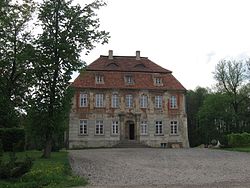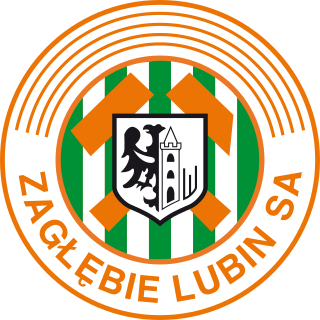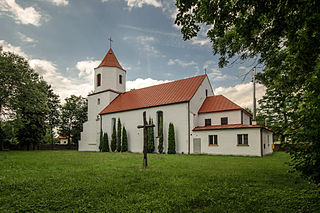Krzeczyn Mały | |
|---|---|
Village | |
 Palace | |
| Coordinates: 51°23′05″N16°06′53″E / 51.38472°N 16.11472°E Coordinates: 51°23′05″N16°06′53″E / 51.38472°N 16.11472°E | |
| Country | |
| Voivodeship | Lower Silesian |
| County | Lubin |
| Gmina | Gmina Lubin |
Krzeczyn Mały [ˈkʂɛt͡ʂɨn ˈmawɨ] (German : Klein Krichen) is a village in the administrative district of Gmina Lubin, within Lubin County, Lower Silesian Voivodeship, in south-western Poland. [1]

German is a West Germanic language that is mainly spoken in Central Europe. It is the most widely spoken and official or co-official language in Germany, Austria, Switzerland, South Tyrol (Italy), the German-speaking Community of Belgium, and Liechtenstein. It is also one of the three official languages of Luxembourg and a co-official language in the Opole Voivodeship in Poland. The languages which are most similar to German are the other members of the West Germanic language branch: Afrikaans, Dutch, English, the Frisian languages, Low German/Low Saxon, Luxembourgish, and Yiddish. There are also strong similarities in vocabulary with Danish, Norwegian and Swedish, although those belong to the North Germanic group. German is the second most widely spoken Germanic language, after English.
Gmina Lubin is a rural gmina in Lubin County, Lower Silesian Voivodeship, in south-western Poland. Its seat is the town of Lubin, although the town is not part of the territory of the gmina.

Lubin County is a unit of territorial administration and local government (powiat) in Lower Silesian Voivodeship, south-western Poland. It came into being on January 1, 1999, as a result of the Polish local government reforms passed in 1998. The county covers an area of 712 square kilometres (274.9 sq mi). Its administrative seat and largest town is Lubin, and its only other town is Ścinawa.
Prior to 1945 it belonged to Germany. The former German Junker (landed nobility) of the Harrach family left a Baroque palace which since 1997 is a property of Count Ghislain de Nicolay.

Germany, officially the Federal Republic of Germany, is a country in Central and Western Europe, lying between the Baltic and North Seas to the north, and the Alps to the south. It borders Denmark to the north, Poland and the Czech Republic to the east, Austria and Switzerland to the south, France to the southwest, and Luxembourg, Belgium and the Netherlands to the west.

Junker is a noble honorific, derived from Middle High German Juncherre, meaning "young nobleman" or otherwise "young lord". The term is traditionally used throughout the German-speaking, Dutch-speaking and Scandinavian-speaking parts of Europe. It also was used in the Russian Empire due to Baltic German influence, up until the Russian Revolution.
Landed nobility or landed aristocracy is a category of nobility in various countries over the history, for which landownership was part of their noble privileges. Their character depends on the country.





